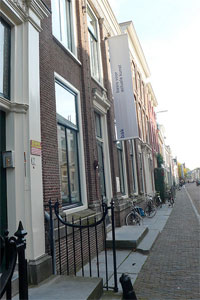 The videos of Artur Żmijewski are screened in almost all the major collective exhibitions and biennales these days. I caught a glimpse of his video in one such events and thought ‘looks interesting’ but i passed my way. In front of art cornucopia, video is always the last on my list and it gets my attention only if there’s a seat available for me to have nap in the dark.
The videos of Artur Żmijewski are screened in almost all the major collective exhibitions and biennales these days. I caught a glimpse of his video in one such events and thought ‘looks interesting’ but i passed my way. In front of art cornucopia, video is always the last on my list and it gets my attention only if there’s a seat available for me to have nap in the dark.
But on Thursday i took the train to Utrecht to see the solo exhibition of the Polish artist at BAK, basis voor actuele kunst.
The exhibition presents “social studios,” social experiments of sorts documented on film in an openly confrontational way. Think reality shows for art galleries. The artist confronts individuals to uncomfortable situations that explore complex moral issues. He then waits and films as the scenes unfold.
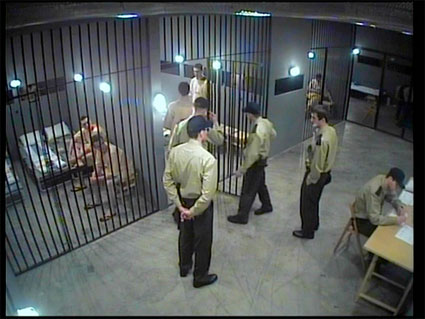 Artur Zmijewski, Repetition, 2005
Artur Zmijewski, Repetition, 2005
In Repetition, 2005, Żmijewski revisits the 1971 Stanford Prison Experiment, a two-week investigation to respond to the following question: “What happens when you put good people in an evil place?” At the time, 24 undergraduates were selected to play the roles of both guards and prisoners and live in a mock prison. After six days, Philip Zimbardo was forced to end the experiment. The guards took great pleasure in exercising violence, humiliating and torturing the prisoners; the prisoners, too, lost their ability to distinguish what was real and what was simulated.
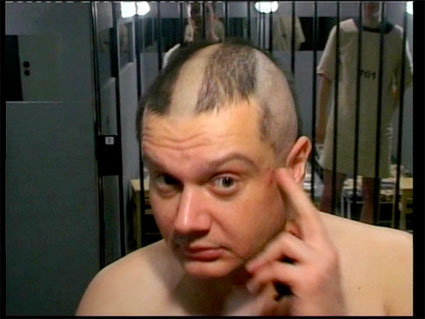 Artur Zmijewski, Repetition, 2005
Artur Zmijewski, Repetition, 2005
Żmijewski recreated the experiment despite the fact that contemporary science would regard it too dangerous–and effective–to carry out again. Whether you catch the film right from the beginning or arrive in the middle of it, the scenes of sadism, frustration, humiliation, anger, and especially fear look way too real and instinctual, to be just a game.
 Artur Zmijewski, Repetition, 2005
Artur Zmijewski, Repetition, 2005
Repetition is more than just a mechanical representation of the 1971 undertaking. The artist removes the experiment from its scientific context and the conditions of the time and places it in today’s world, to transform it into a “universal manifestation of weakness and moral failure.” Besides the 7 inmates and 9 guards (all of them unemployed people without), participants included psychologists responsible of stopping everything if it turned dangerous, a former prison inmate, and a sociologist involved in prison system reforms. The experiment collapsed after only few days as the participants collectively decided to leave the prison. As Maria Hlavajova wrote in her essay for the exhibition, Can this moment of resistance be seen–in a time in which the world struggles to come to terms with Guantanamo, Abu Ghraib, and the like–as a humble indication that violence, cruelty, brutality, and terror can be expunged as accepted options for creating the conditions for how to live together after all? What is sure is that the artwork raised much controversy and discussion at the time in Poland.
Żmijewski believes that in order for art to regain its value in society, it has to expose societal conflict and disclose the conditions in which social antagonisms are cultivated and maintained by the powers that be. Convinced that the hard-won autonomy of art–in which art is considered independent from the “real” world–has actually disempowered it from acting as an accountable public voice, Żmijewski insistently requires of art that it take responsibility and engage in a dialog with the current social and political reality around us.
Apart from Repetition, several other videos can be viewed at BAK. The one i found most moving is 80064. Its title is the camp number of a 92 years old Auschwitz survivor, Jozef Tarnawa. The tattoo has faded with the years and Zmijewski meets the old man in a tattoo parlor and tries to persuade him to have it ‘refreshed’.
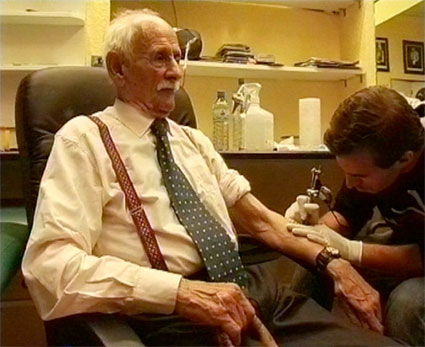
The old man is not to be convinced easily. He wants to be left in peace. He is worried that the renewed tattoo will not be ‘original.’ In the end, Zmijweski gets his way and the poor man submits his arm unwillingly to the tattoo artist. In Zmijweski’s own words: ‘When I undertook this film experiment with memory, I expected that under the effect of the tattooing the ‘doors of memory’ would open, that there would be an eruption of remembrance of that time, a stream of images or words describing the painful past. Yet that didn’t happen. But another interesting thing happened. Asked whether, while in the camp, he had felt an impulse to revolt, to protest against the way he was treated, Tarnawa replied: ‘Protest? What do you mean, protest? Adapt – try and survive.’ In the film, suffering, power relationships, and subordination are repeated.
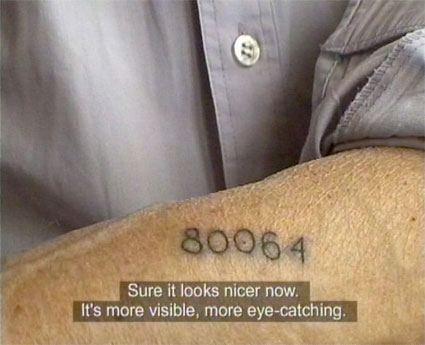 Artur Żmijewski: The Social Studio is on view from 28 September until 16 November 2008. n view until 16 November 2008 at BAK, Lange Nieuwstraat 4, Utrecht, the Netherlands.
Artur Żmijewski: The Social Studio is on view from 28 September until 16 November 2008. n view until 16 November 2008 at BAK, Lange Nieuwstraat 4, Utrecht, the Netherlands.
Related: History will repeat itself (part 1) and (part 2).
